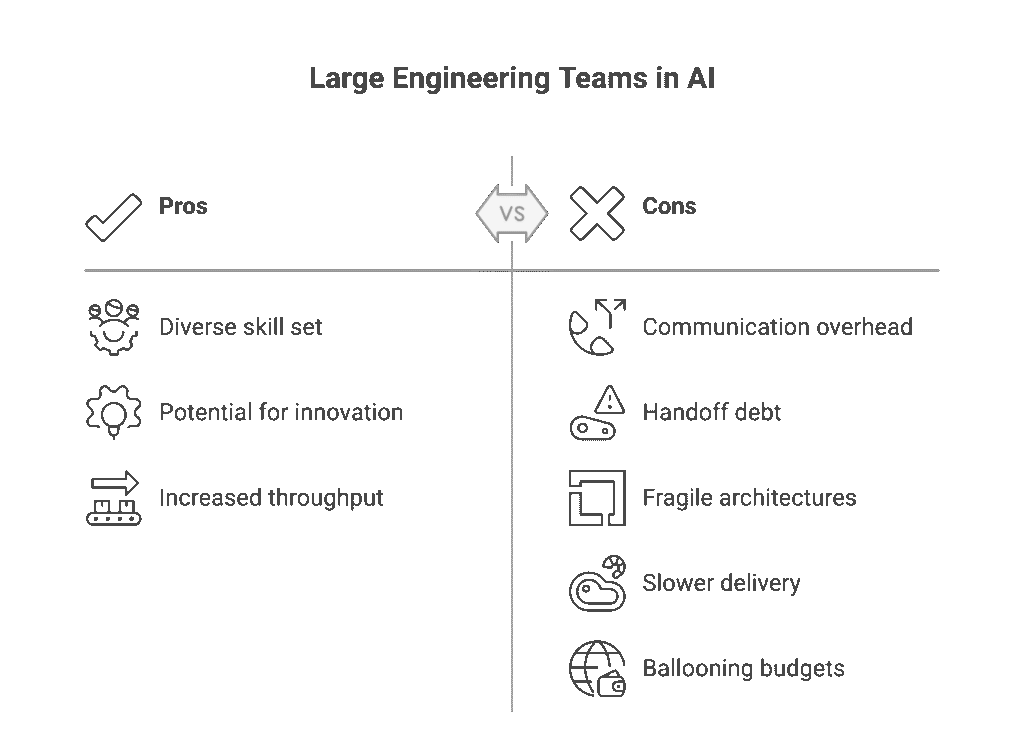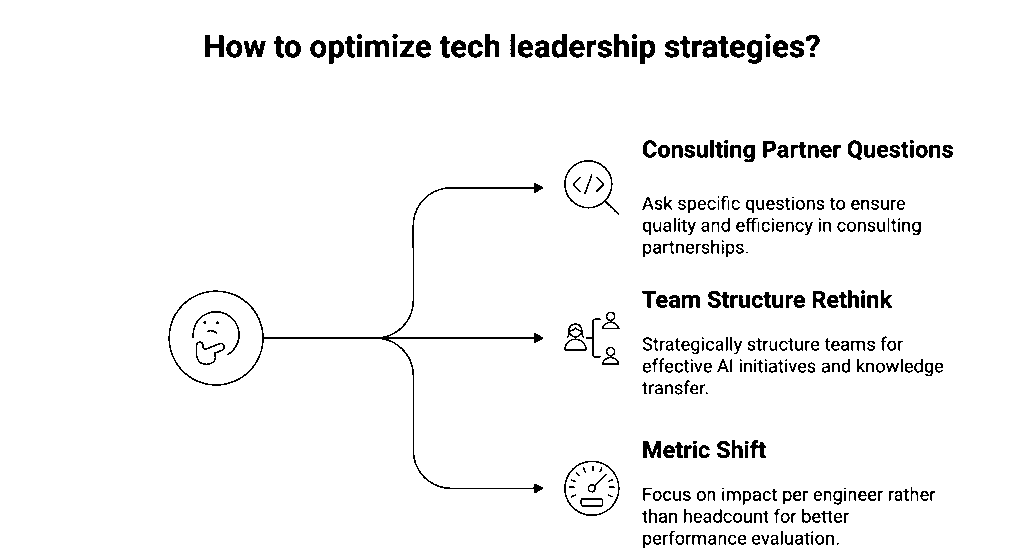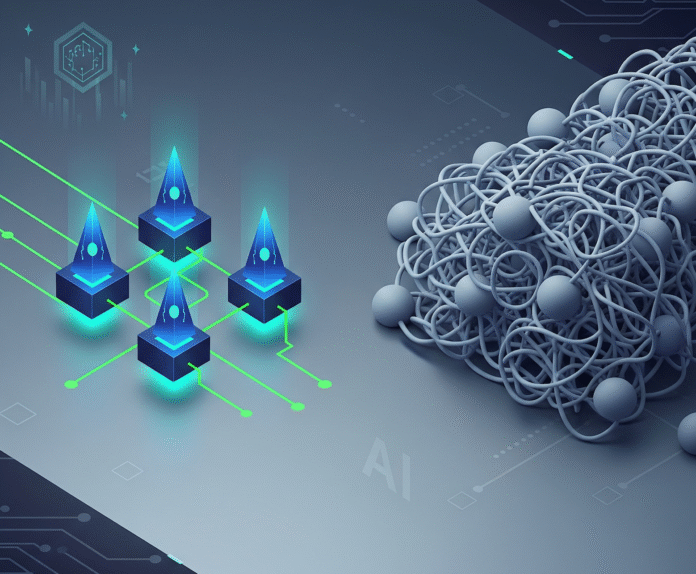In enterprise AI, the concept of scaling engineering teams is widely misunderstood. Many executives assume that if ten engineers can complete a project in six months, then twenty engineers will be able to finish it in half the time. In reality, adding more engineers is more likely to slow down AI projects rather than accelerate them.
Larger, mixed teams tend to create friction. As the team scales they end up in endless meetings, with frequent handoffs, and layers of rework. Instead of speeding up progress, productivity decreases, leading to missed deadlines, increased costs, and fragile architectures.
Conversely, small teams composed solely of senior engineers can turn this trend around. With fewer individuals on the team, there is tighter alignment and complete ownership over the project. This approach allows these more senior resources to deliver functional AI systems faster, with fewer defects, and without the need for costly rewrites.
Why Engineering Armies Struggle in AI Projects
At first glance, big teams look impressive. A 20-person squad staffed with juniors, mids, and a handful of seniors seems to promise raw throughput. But AI projects don’t scale linearly with headcount. They scale with decision velocity and architectural clarity.
Communication Overhead
Every new engineer increases communication paths (see Conway’s Law). With five developers, you manage ten possible interactions. With twenty developers, you manage 190. That exponential overhead translates into daily standups that drag, Slack threads that sprawl, and Jira tickets that require constant clarification.
Handoff Debt
Blended teams rely on seniors to design systems and juniors to implement them. Context gets lost in the handoff. Misinterpreted assumptions don’t surface until quality assurance (QA) or integration. By then, seniors step back in not to optimize but to fix broken work.
Fragile Architectures
AI and data systems magnify this fragility. A schema misalignment upstream can cascade into corrupted model outputs downstream. A misconfigured Extract, Transform, and Load (ETL) pipeline can break observability across the stack. When ownership fragments, no one sees the full system until it fails under load.

The result? Slower delivery, ballooning budgets, and fragile platforms that require stabilization cycles before they ever see production.
The Leverage Model of Senior-Only Teams
Elite AI-focused teams invert the model. Instead of scaling by headcount, they scale by leverage.
Each senior engineer is a multiplier; they don’t just execute tasks. They design, decide, and deliver in one loop. Senior engineers compress the OODA cycle (Observe, Orient, Decide, Act) into hours, instead of days.
This leverage model is similar to how special operations units function in the military. A small team with deep expertise can achieve outcomes that would take a much larger, less experienced force significantly longer. The principle is the same: fewer people, higher competence, faster execution.
For AI delivery, that means:
- Faster convergence on architecture.
- Cleaner, production-ready implementations.
- Systems designed to scale without rewrites.
That leads to the inevitable questions about the costs of a senior team versus the operating with a larger headcount.
Economics of Expertise
At first glance, senior-only teams appear more expensive per head. But the lifecycle economics tell a different story.
A 12-person blended team may cost less per engineer, but they introduce high rework rates, often 35–50% of features require rework due to handoff misalignment. Add in longer QA cycles, integration failures, and post-launch fixes, and the total cost of ownership spikes.
By contrast, a 4-person senior-only team may bill higher rates, but they eliminate most of this waste. Rework drops below 15%, QA cycles shrink, and architecture holds up under production load.
For example:
- Blended Team (12 engineers) – Delivers a minimum viable product (MVP) in 16–20 weeks, with 35–50% rework, and requires stabilization before production.
- Senior-Only Team (4 engineers) – Delivers an MVP in 6–8 weeks, with <15% rework, and deploys cleanly into production.
The board doesn’t care how many engineers you hired. They care about ROI, time-to-market, and risk. On these metrics, senior-only teams win.
Case Highlights: Proof That Less Is More
The best evidence comes from real-world enterprise projects.
Fortune 500 Tech Vendor: 50% Faster Time-to-Market
A $30B enterprise needed to replace a legacy backup solution with a cloud-native product spanning AWS and Azure. The initial roadmap projected 12 months. With a senior-only Halo Radius team, the MVP launched in just 6 months, a 50% acceleration.
The team built a working proof-of-concept in the first sprint, iterated with stakeholders in tight loops, and shipped a production-ready system without requiring post-launch rewrites.
Enterprise Data Platform: $6M Saved and New Product Velocity
A global tech company with over 70 million devices faced ballooning cloud costs and fragmented data pipelines. Halo Radius led a senior-driven initiative to unify these pipelines with declarative orchestration.
The outcome:
- $4M savings in data services.
- $2M annual savings in AWS spend.
- Faster launch cycles for new AI-driven products.
This wasn’t about squeezing cost. It was about unlocking velocity and stability across the business.
These cases prove a simple principle: impact per engineer matters more than total headcount. For a deeper dive, see how Halo Radius shows the full breakdown of the Senior Engineering Dividend.
Lessons for Tech Leaders
How should CTOs, VPs of Engineering, and architects apply these lessons?
Ask the Right Questions of Consulting Partners
- Who is actually writing the code, seniors or juniors?
- How many handoffs occur between design and implementation?
- What percentage of features typically require rework?
Rethink Internal vs. External Team Structures
- Use external senior-only teams to lead critical AI initiatives.
- Integrate them with the in-house staff for knowledge transfer.
- Avoid vendor models that optimize for seat count instead of impact.
Shift Metrics from Headcount to Leverage
Instead of asking, “How many engineers are on this project?” ask, “How much impact per engineer are we getting?” Delivery velocity, architecture quality, and system stability are the true indicators of success.

Scale Impact, Not Headcount
AI and large scale projects don’t fail because of a lack of effort. They fail because of wasted cycles, handoffs, rework, and fragile designs. Large engineering armies amplify these problems.
Small, senior-only teams solve them. They deliver faster, with fewer defects, and with systems that don’t collapse under scale. They maximize ROI and minimize risk.
If you’re leading an AI initiative, don’t measure success by how many engineers you can hire. Measure it by how much impact each engineer delivers. That’s the Senior Engineering Dividend. And it’s why small elite AI teams consistently outperform large engineering armies.
Halo Radius is a consulting collective led by experienced Silicon Valley CTOs and engineering leaders. They help clients in Technology, Finance, and Logistics solve complex problems and accelerate growth. With expertise in Generative AI, LLMs, Machine Learning, Data Science, and cost-efficient software development, they build world-class SaaS and AI products. Their work combines technical precision with strategic clarity to deliver results that scale.


